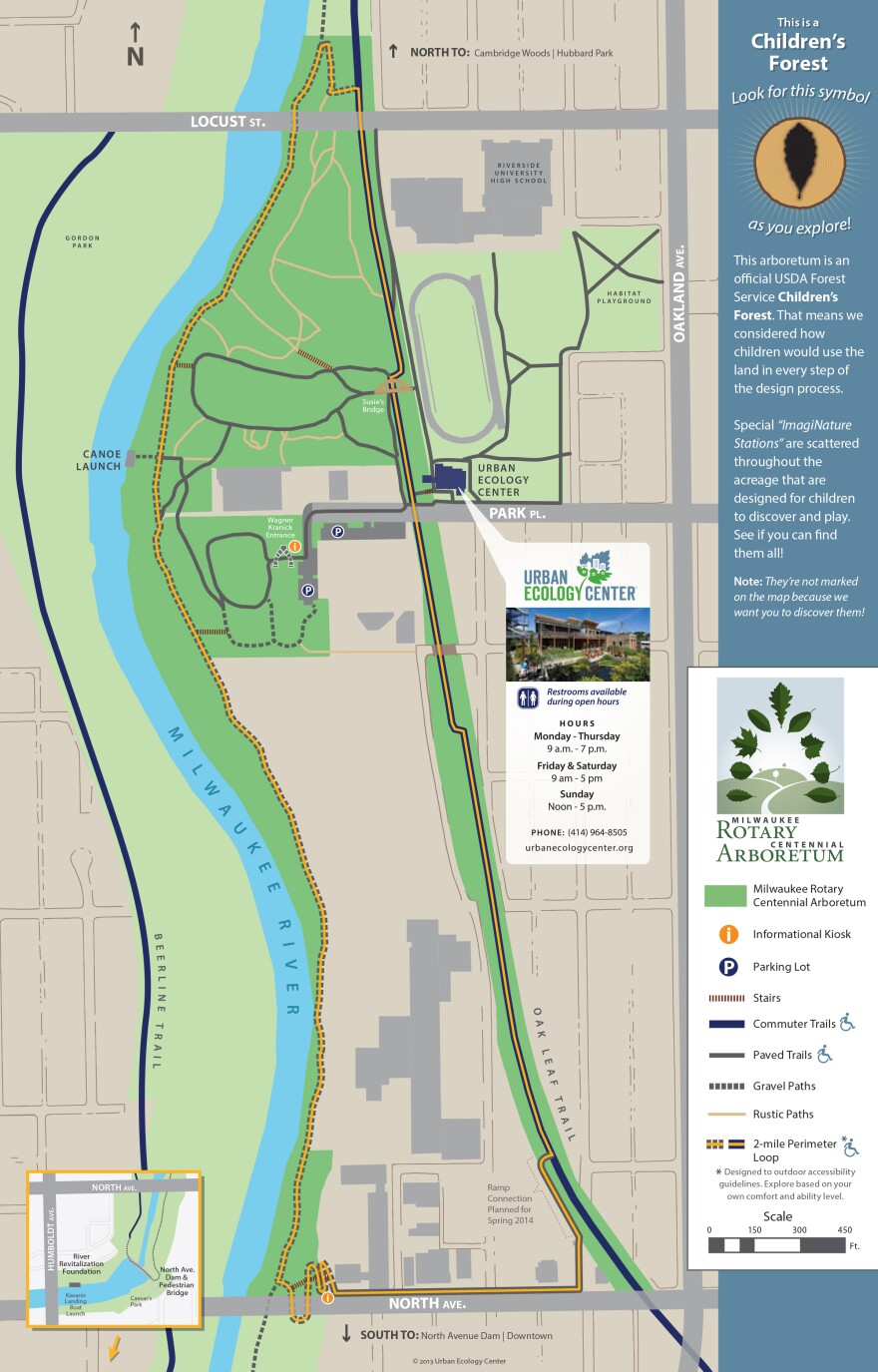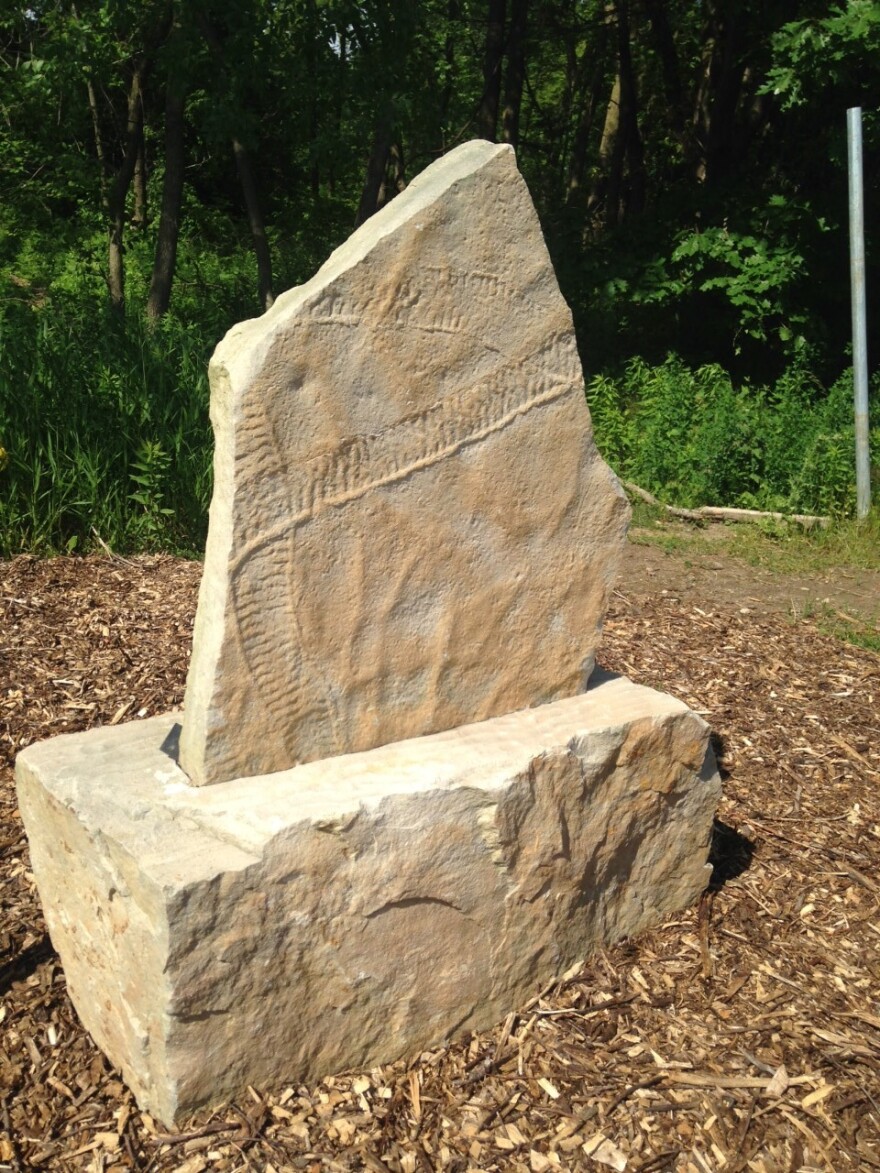The Urban Ecology Center specializes in introducing people to the urban environment. Over the last 25 years, the education-based organization has created three branches.

Below its flagship facility near Riverside University High School, UEC joined forces with the Rotary Club of Milwaukee joined to create a 40-acre arboretum above the Milwaukee River.
Recently, a short path was added to the preserve to create another reason to explore nature. A series of 9 cairns, all but one have been installed, are anchored to slabs of cement along the path.
What’s a cairn? It’s a pile of rocks, but with special meaning and ancient traditions. Cultures around the world have erected cairns to memorialize people and places.
UEC executive director Ken Leinbach says hard-core hikers rely on cairns. "When you backpack above the tree line on mountains or in deserts it’s very hard to follow the trail. So a cairn is pile of rocks that guides you from one pile to the next and that’s how we got it in our head that we might guide people along with cairns,” he says.
Each pile along the path represents a different era of Wisconsin’s geological history. “We worked with geologists from UWM, and also from Madison, to help us figure out what the right rocks were and what the eras were we needed to represent,” Leinbach says.
The the youngest rock is still extremely old – 390 million years.
Slabs of the limestone are stacked to create the 6-foot tower.
The center didn’t have to travel far to find the rock. A man named Pieter Godfrey salvaged it. Not long ago, he worked and lived practically on this spot.

“Pieter Godfrey....he was a materials reclamation guy and all of this rock was the foundations of some of Milwaukee’s home. And he got the original rock and when we bought the property it came with it. And he has since passed away, so it’s a special thing,” Leinbach says.
Leinbach’s favorite artifact is a middle-aged one geologically speaking. It dates back more than 500 million years and is Cambrian sandstone.
“You see the fossilized something in there. Any guesses what that might be? I’d be totally amazed if you guessed it. This is actually the footprint of a giant snail. So these two tracks of a giant snail that made its way across the bottom of the ocean. When you think about the massive amount of time we’re talking about is really something else,” Leinbach says.
The final and most ancient treasure here on the trail is a chunk of jade found in a corn field outside Wausau. “So this is from the oldest era of Wisconsin. And actually don’t know how old it is, but the guess is about 3.5 billion,” Leinbach says.

Yet because there’s not enough of it, trail planners have artistically sandwiched the jade between two pieces of concrete – giving the cairn a connection to the reclamation guy you heard about earlier.
“When we dug up Pieter Godfrey’s factory, we found some of the old foundation. So this is actually hand-created concrete. Making it the oldest and the youngest combined together,” Leinbach says.
LISTEN: Milwaukee's Urban Ecology Center Strikes on a Formula that Works
Leinbach had lead a small group on a warm summer’s night along the path of cairns, each illuminated by a tiki torch.
In case the ancient rock left anyone undazzled, Leinbach wound the group up to a nearby hilltop. It’s said to possess a special spirit.
Leinbach shared a story. He once met a woman, whose son discovered this spot at a time of personal crisis.
“And so he would come up here every morning and mediate as a 17-year-old kid trying to get through this crisis,” Leinbach says.
The teenager conquered his crisis. Some sort of magic seemed to be at work among this cluster of people gazing at a star-studded sky. Everyone was reluctant to leave.





